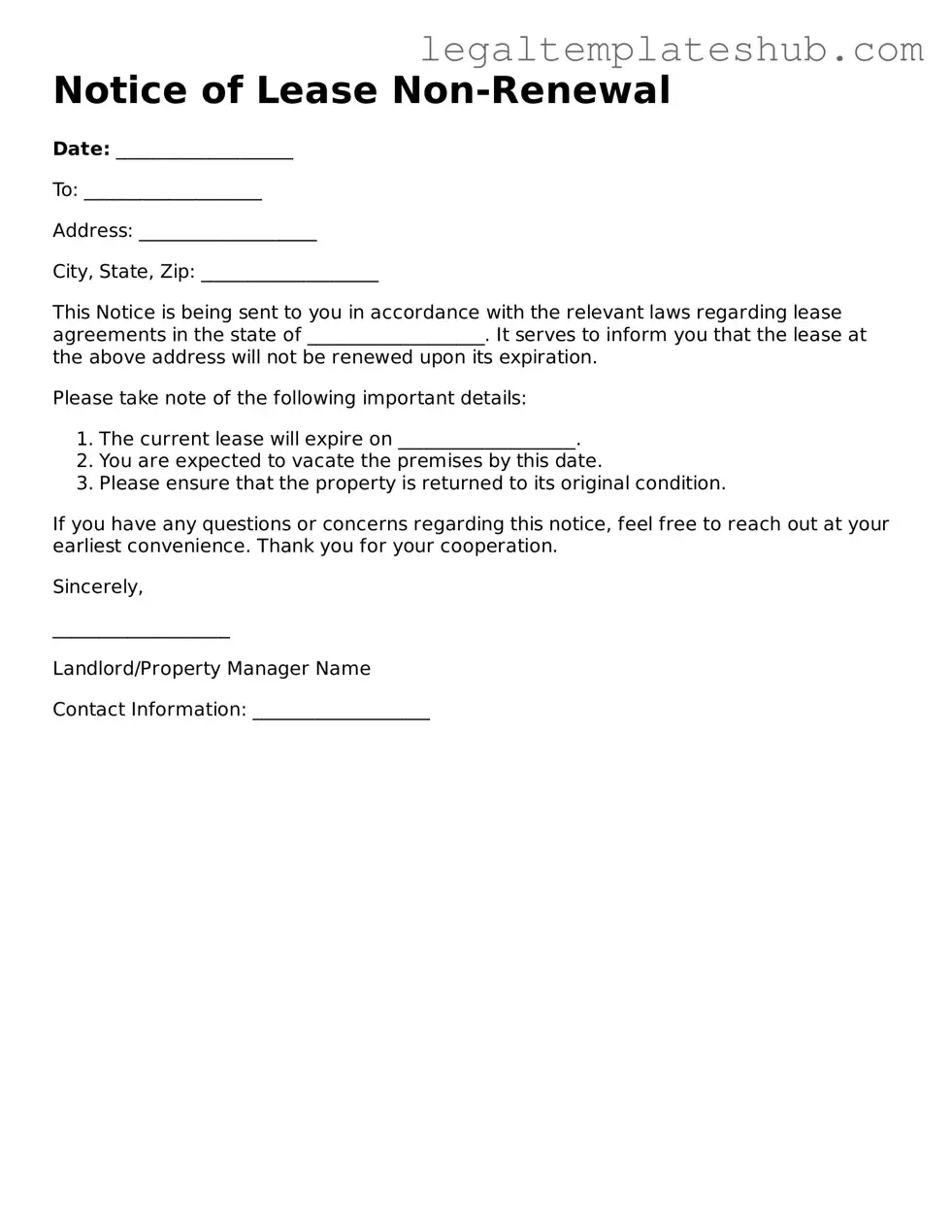Printable Notice of Lease Non-Renewal Template
The Notice of Lease Non-Renewal form is an official document that informs tenants that their lease will not be extended beyond its current term. This form serves as a critical communication tool between landlords and tenants, ensuring clarity about future housing arrangements. To proceed with the non-renewal process, please fill out the form by clicking the button below.
Access Editor
